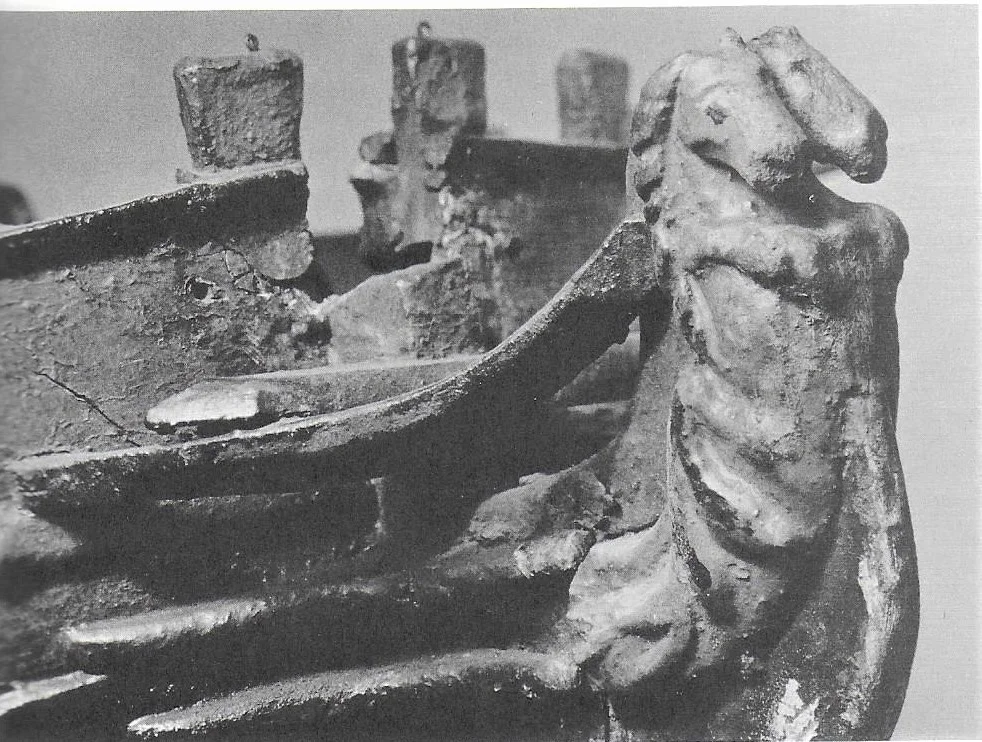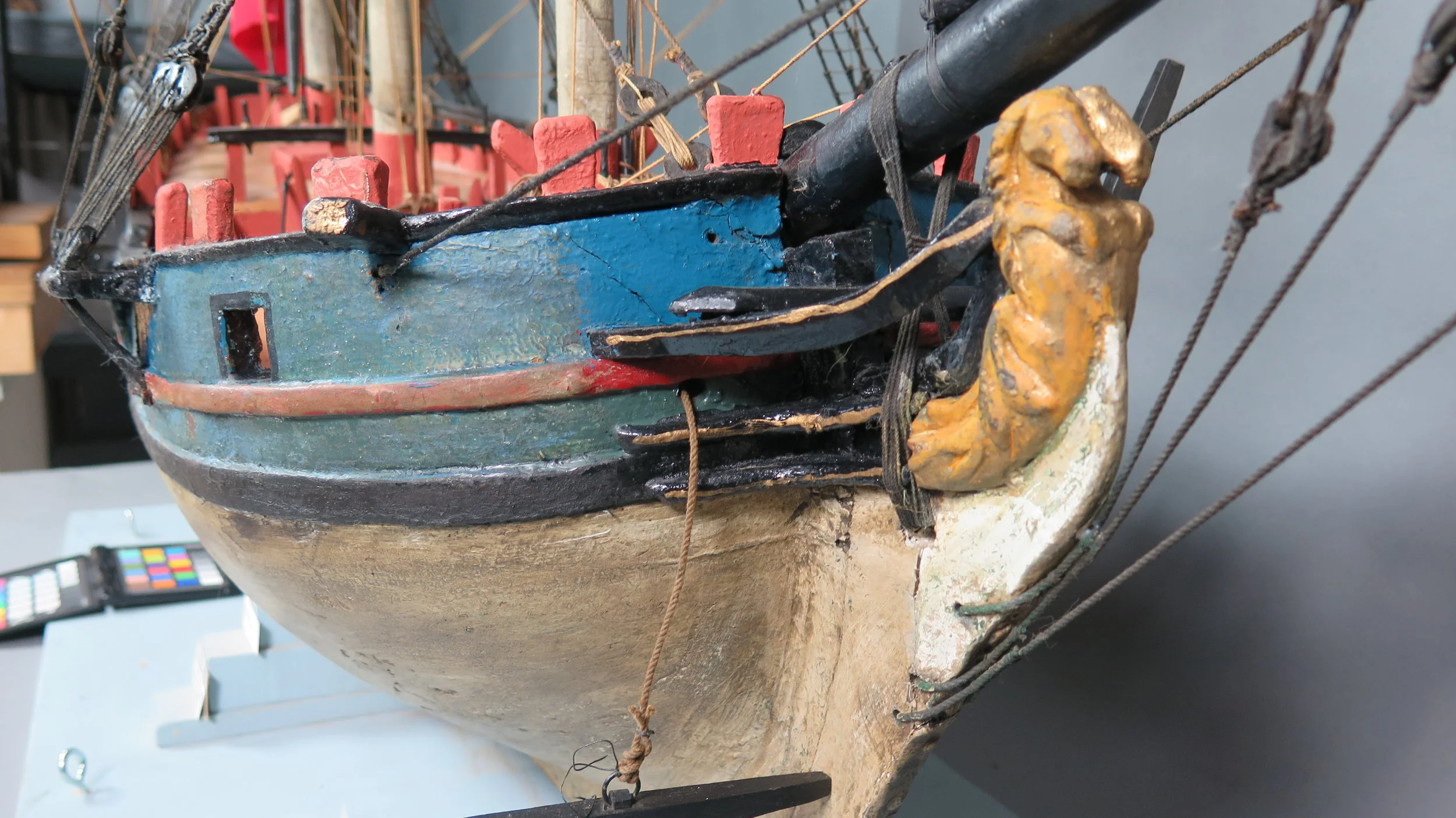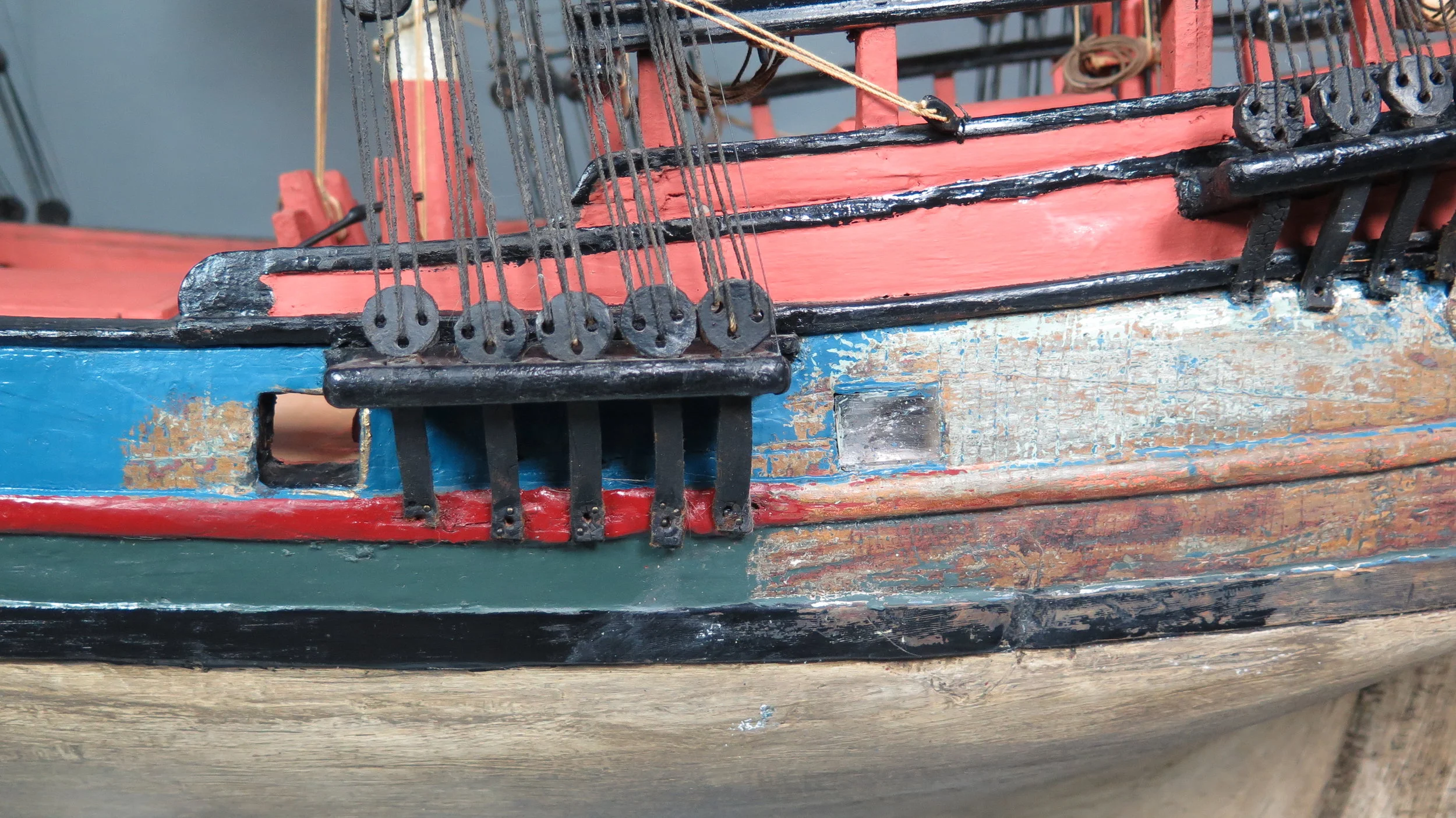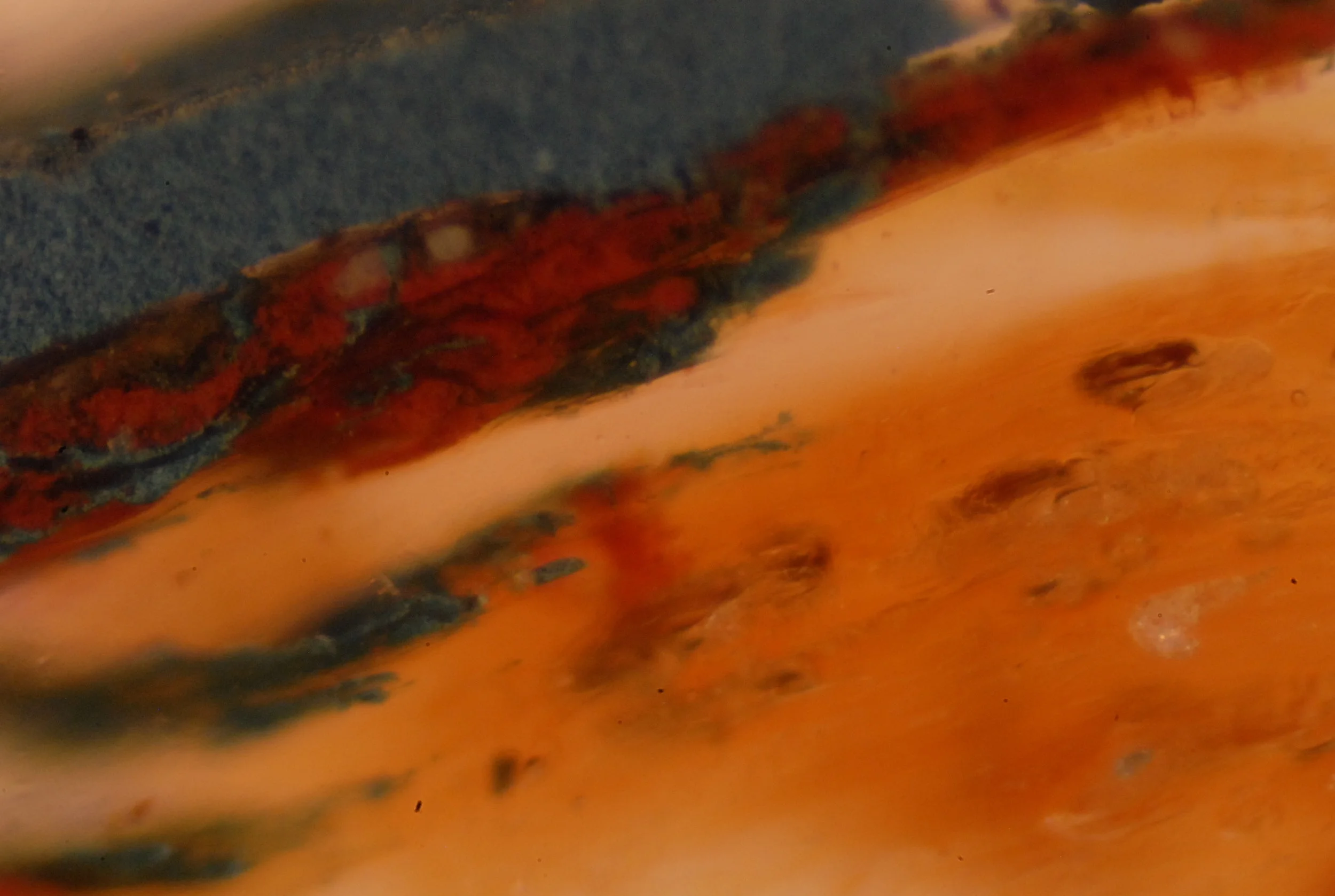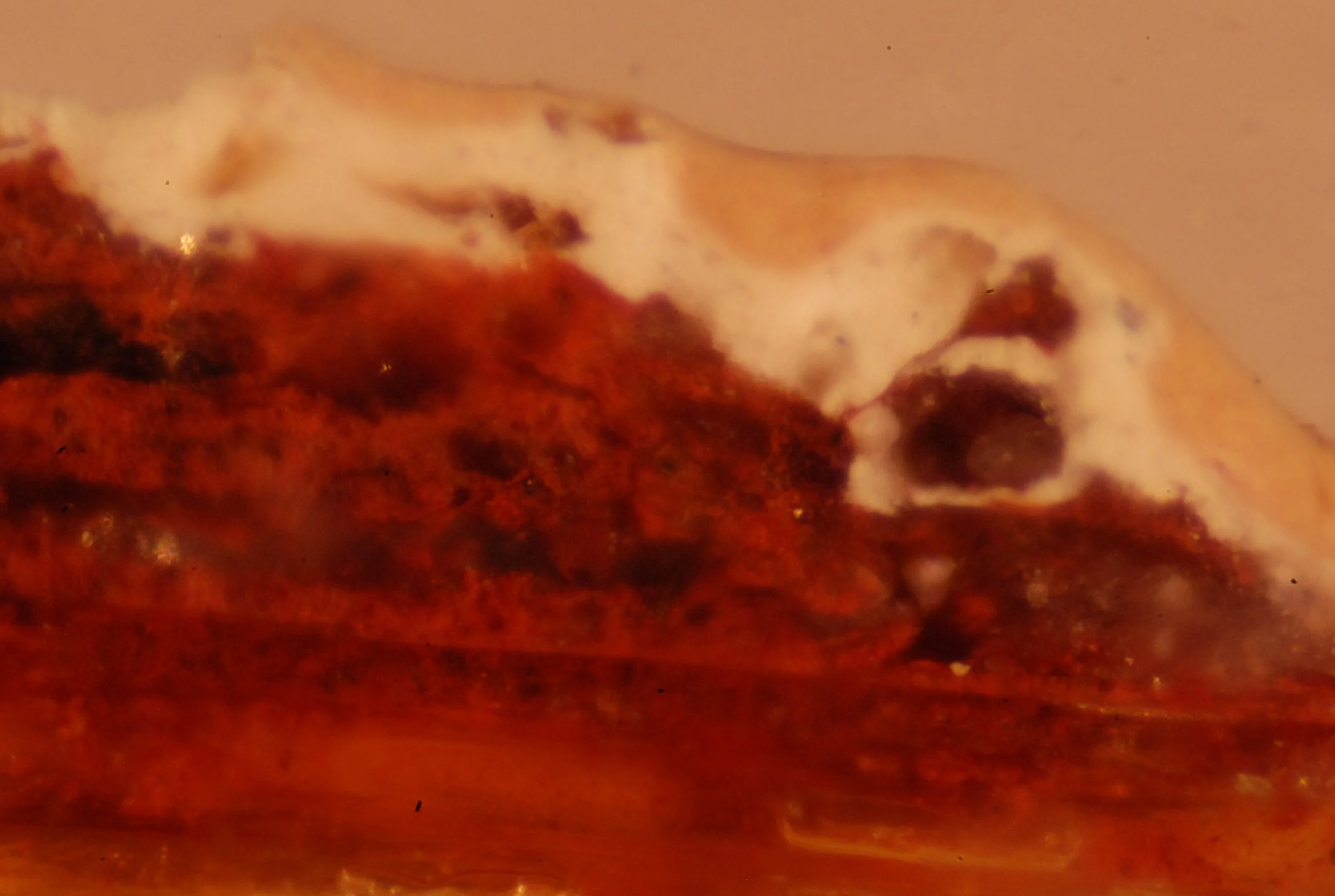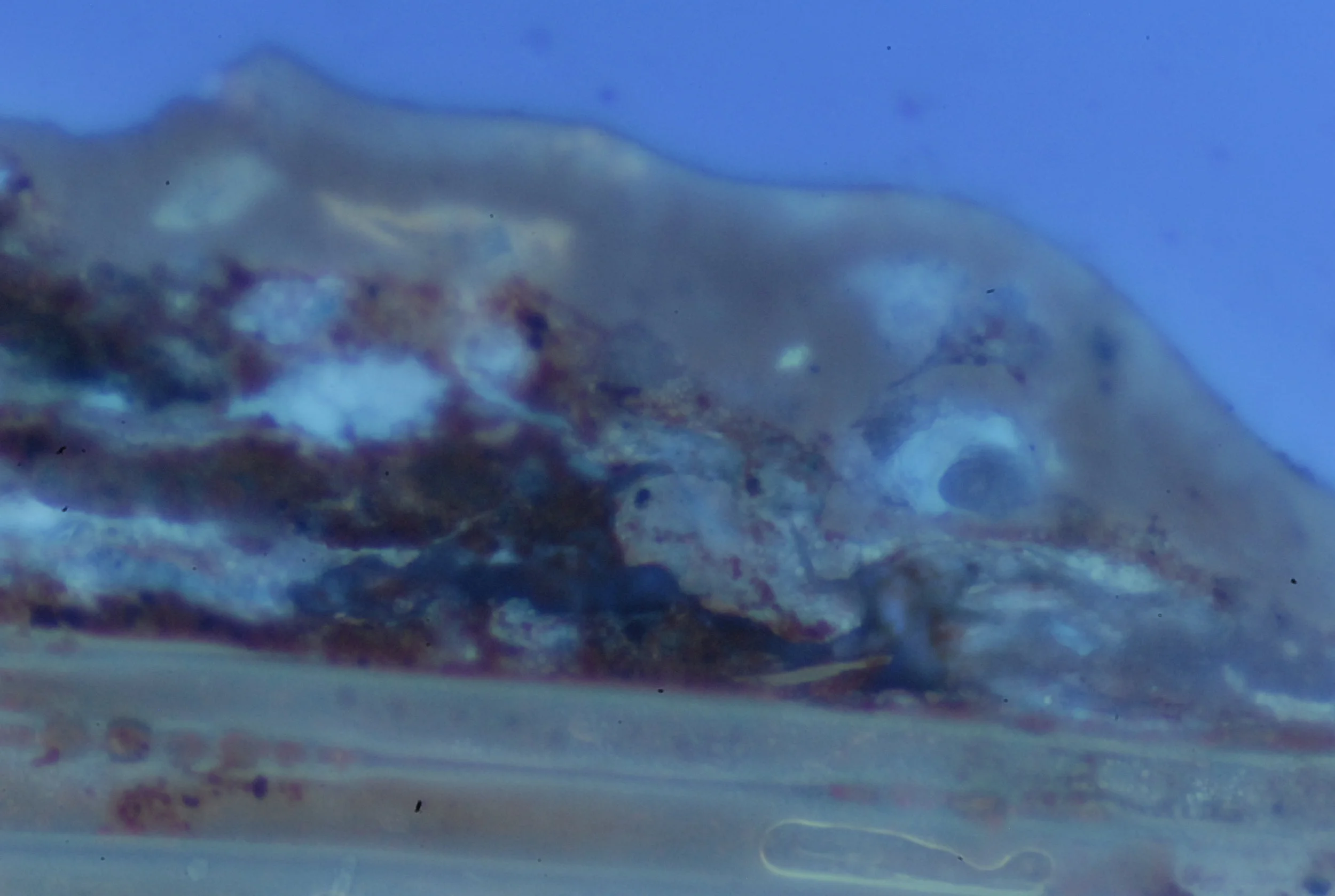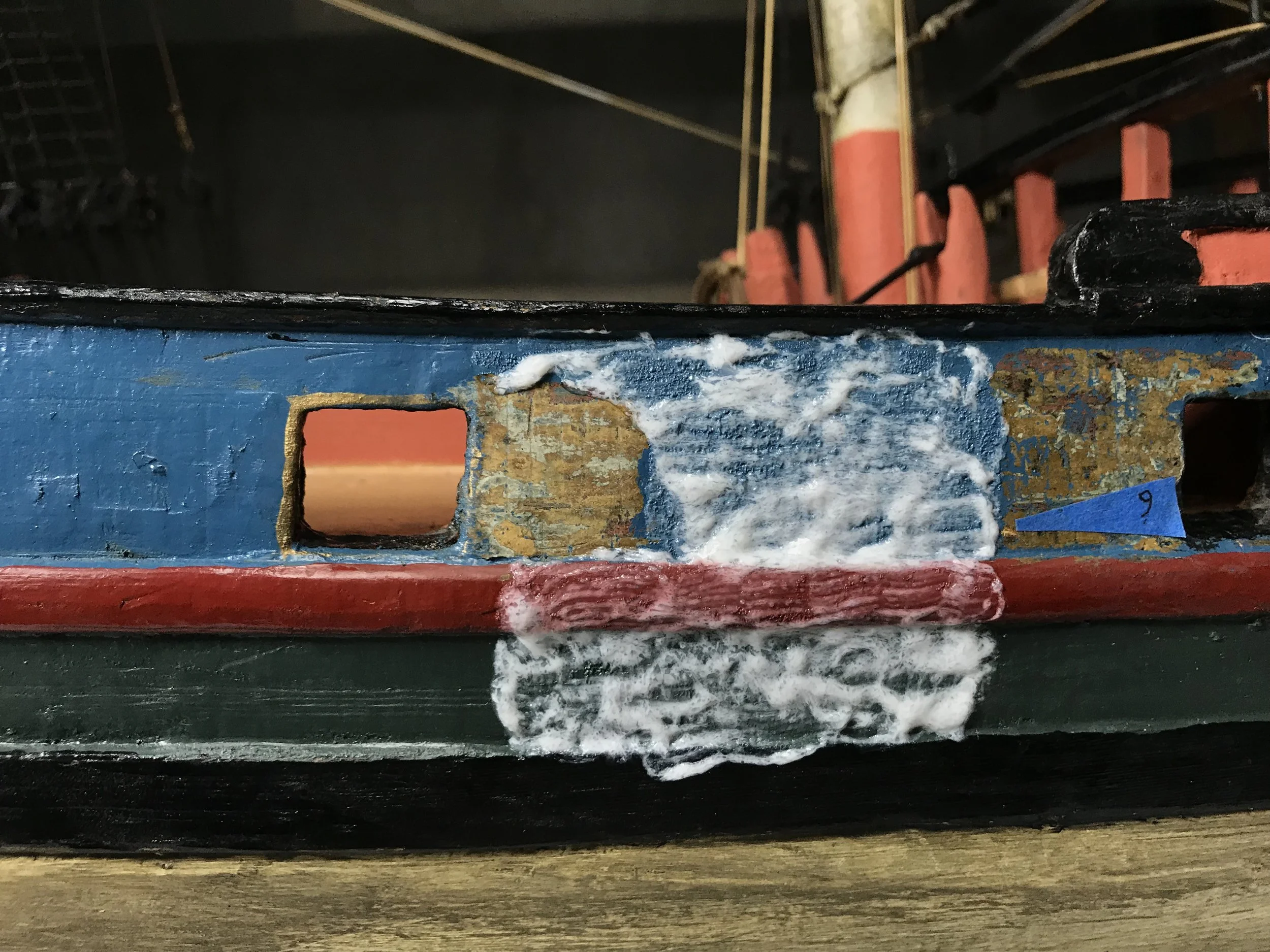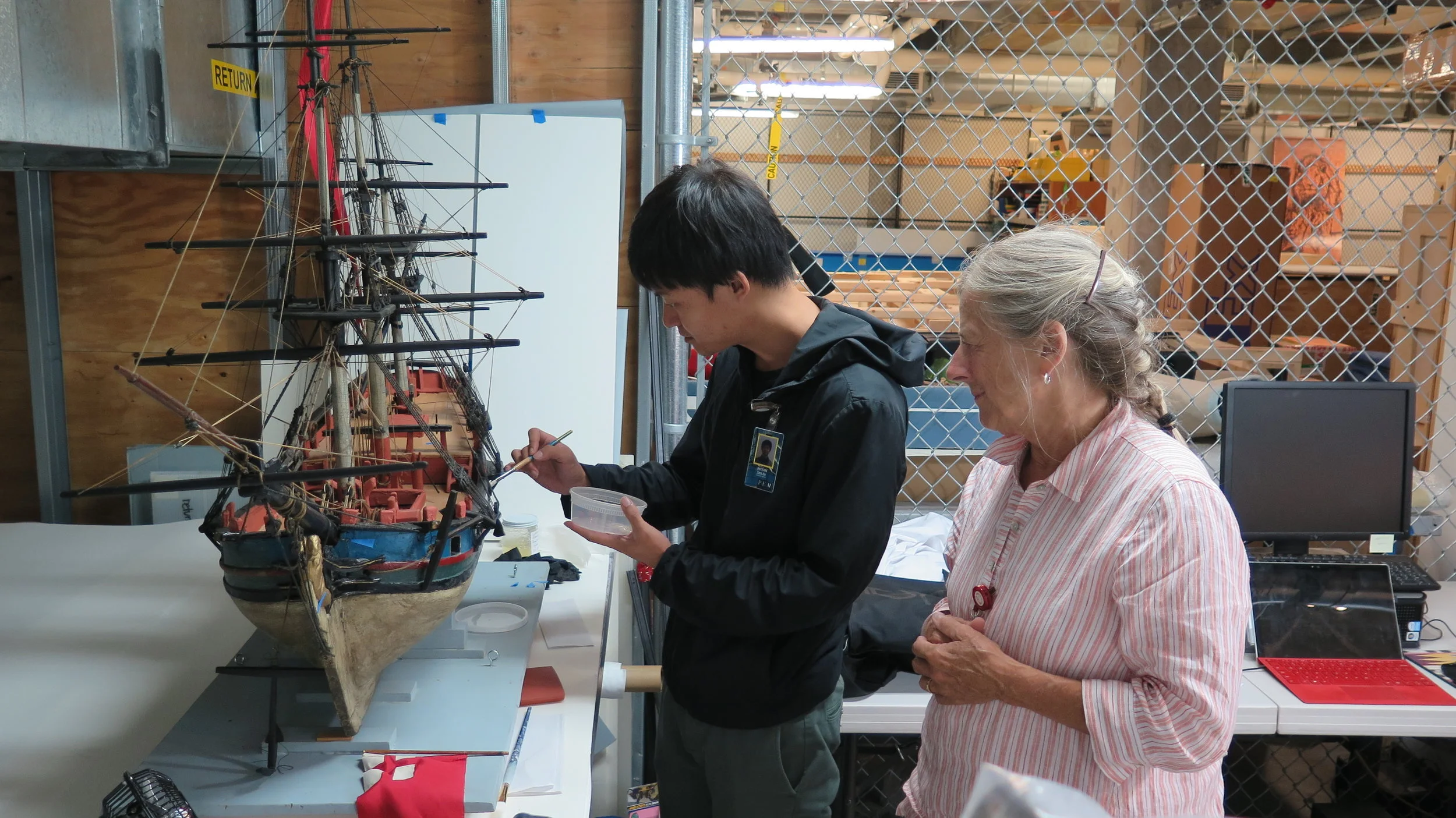Portside of the ship model, before treatment
Conservation of the 18th Century American Ship Model
Identification number: M9100
Materials: wood (likely oak, pine, possibly other woods), paint, textiles (linen, cordage), metal hooks, glass and plastic for portholes, leather
Supervisor: Mimi Leveque, Christine Thomson
Project Date: July to August, 2018
Historical Background and General Description
This ship model, possibly one of the oldest 18th century examples extant, was painted with acrylic paint sometime in the 1980’s to freshen up its appearance and, as was revealed, to hide unevenness in the earlier painted surface and probably to cover old repairs. Dan Finamore, the Russell W. Knight Curator of Maritime Art and History, was interested in undertaking a paint study using cross-sectional analysis of tiny paint samples to determine the history of paint on various surfaces of the model and to hopefully use the information gained by analysis to reconstruct the ship’s first color scheme. Christine Thomson, conservator in private practice specializing in painted surfaces, was contracted to undertake the study in 2015. She did initial examination and paint removal to determine optimal sampling locations and treatment protocols. As Thomson stated in her 2016 report: “we (Dan Finamore and Christine Thomson) agreed that it made sense to remove as much of the current acrylic paint layer as possible to expose the earlier paint layers, which are most likely oil paints, before taking any samples. Removal of the acrylic paint will give better insight into the condition of the surface and of earlier paint schemes and will also to help determine the most representative areas with complete paint stratigraphies for sampling. Approximately 15 hours were initially spent removing acrylic paint from the hull and other areas, but the work of removal is not completed. “(Thomson, 2016)
Painted surfaces
The previous work undertaken to date is as following (Thomson, 2016):
Removal of the acrylic paint layer, undertaken with a proprietary paint stripper, Peel Away #7, left all oil paint areas intact and revealed the following information:
1. The starboard hull above the water line, both above and below the rub rail, has been painted a medium blue on at least two occasions. The rub rail was painted orange, the water line black and the hull white. These colors may be the second or third generation colors, but they are intact oil paints in relatively good condition.
2. Removal of acrylic paint from the port side of the hull has revealed a disparate surface, with only a little bit of the blue layers seen on the starboard side of the hull surviving. Most has been removed or worn away, revealing an off-white colored surface underneath, which might be the original color of the hull.
3. Removal of the coral-colored paint from the stern revealed that it has undergone some structural repairs before the most recent paint was applied. There is a 7/8” wide patch of plaster or other white material along the lower edge of the stern and a wooden shim added along each side where the stern meets the hull, ostensibly to fill gaps between the hull and the stern boards.
4. The deck boards underneath the acrylic paint are so far unfinished, and there seems to be no evidence of weathering. This might be an indicator that the deck has been replaced. Cross-sectional analysis will help to determine if the desk was originally left unpainted and simply oiled or otherwise left bare.
5. The upper portions of the mast (white) and the spars, now painted black, appear to have not been repainted in the most recent campaign of repainting.
6. The figurehead of a double head seahorse, gilded in the last paint campaign, is painted bright yellow underneath the gilding.
2018 Cross-section microscopic analysis of the paint layers:
Nine samples were taken in total for cross-section microscopic analysis of the paint layers on June 22, 2018. Sampling locations covered the hull, deck, stern and figurehead.
As previous investigation and recent removal of the surface paint goes, the generations of surface painting campaigns are revealed partially. The removal is mainly focusing on the planks and rails above the waterline on the hull. The first generation is above the wood substrate, dark red color paint, which is exposed on the portside after removal of the most recent acrylic paint. The second generation is a thick and soft layer of yellowish filling material, with many loss areas on the portside. The paint structure of the second generation is uncertain, since there is no obvious color layer was found during paint removal, probably the ship was yellow at that time. The third generation is the dim greenish blue paint on the starboard side after removal of the acrylic paint by Thomson, consisting of a whiteish ground layer and greenish blue paint. There is the same generation on the portside, but only on the back section of the planks and rails (the orange color). The fourth generation is the acrylic paints in bright color. The third and fourth generations of paints may represent the two different kinds of paints (binding media) in cross-section analysis.
However, whether the first generation of paints is original, cannot be decided yet. The deep scratches and uneven paint layers in the cross-section samples, indicating the thorough stripping or sanding before repainting, especially on the portside, may have led to the loss of the earlier and original paints.
Removal of the acrylic paint, conducted by Yang XU, 2018
Test with acetone, Carbopol gel of xylene, Smart Strip and Safest Stripper
Acetone requires large amount of time and labor work. Carbopo gel with xylene works very well, however, due to the lack of exhausting in the lab, use of aromatic solvent was not allowed. Smart strip works faster, and more effectively than Safest Stripper for the fresh acrylic paint on the portside, while the later works better for the acrylic paint on the starboard side, which was revealed to be the third generation of the painting campaigns. Therefore, both strippers were taken for treatment.
Removal of the paint with Smart Strip and Safest Stripper
Following treatment
The orange color on the deck is extremely difficult to be removed with strippers and normal solvent, and the deck and components above it were probably restored by the volunteers in the 1980s. The decision was made to repaint the deck with a neutral tone and match the rest of the model, considering the time schedule and labor.


